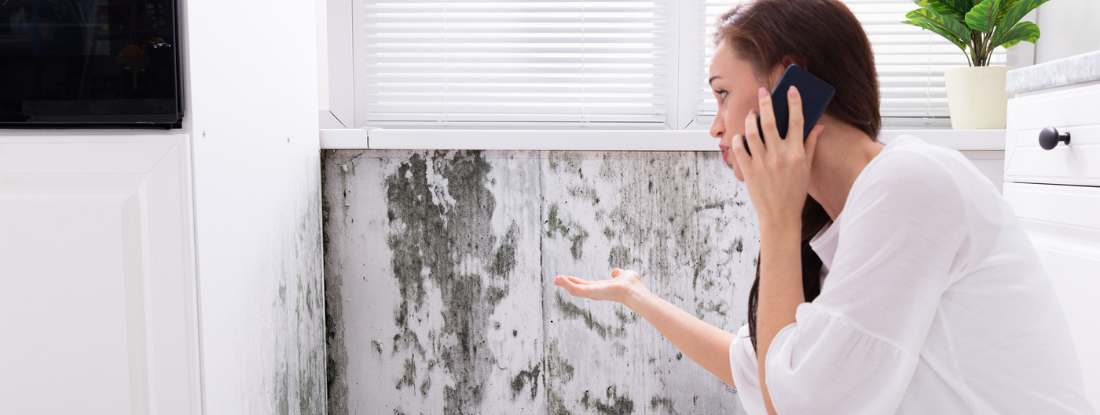Making Sure Post Remediation Verification Accuracy
Wiki Article
Professional Tips for Article Mold And Mildew Removal Success
In the world of mold remediation, successfully removing mold is only half the fight; the true obstacle lies in avoiding its reappearance. By sticking to experienced suggestions and finest techniques, individuals can secure their spaces against mold and mildew renewal and preserve a healthy indoor setting.
Monitor Humidity Levels On A Regular Basis
After completing mold removal treatments, preserving optimum moisture degrees is important to stop mold and mildew re-growth and make sure a healthy interior atmosphere. High moisture degrees above 60% develop a helpful environment for mold and mildew to flourish, making routine keeping track of a proactive measure to stop any kind of future mold and mildew issues.In addition, developing a routine timetable for humidity checks, specifically in high-risk locations such as restrooms, kitchens, and basements, is a positive strategy to mold and mildew avoidance. By constantly keeping an eye on humidity degrees, building owners can effectively minimize the danger of mold reoccurrence and keep a healthy indoor atmosphere post-remediation.
Conduct Thorough Inspections Post-Remediation
Adhering to the completion of mold removal procedures, it is essential to conduct thorough examinations to verify the efficiency of the removal process. These post-remediation assessments are vital in guaranteeing that the mold and mildew problem has actually been effectively dealt with which there is no reappearance or continuing to be mold development. Examinations must be performed by certified specialists that have experience in determining mold and evaluating interior air quality.Throughout these assessments, various approaches such as visual analyses, air sampling, and surface sampling might be employed to thoroughly assess the remediated areas. Aesthetic assessments include a detailed examination of the premises to look for any kind of visible indicators of mold and mildew growth or water damage. Air tasting helps in determining the airborne mold spore levels, while surface area tasting can detect mold particles on surfaces.
Implement Appropriate Ventilation Techniques
After making sure the effectiveness of the mold removal process with complete assessments, the next important step is to concentrate on carrying out appropriate air flow approaches. Appropriate ventilation is necessary in protecting against mold and mildew reoccurrence by regulating dampness levels and promoting air flow.
Proper ventilation not only aids in protecting against mold and mildew development however also contributes to the general health and comfort of owners. By making sure adequate ventilation throughout the building, you can decrease the threat of mold regrowth and produce a healthier living atmosphere.

Use Mold-Resistant Materials for Services
To enhance the long-lasting efficiency of mold and mildew removal efforts, incorporating mold-resistant materials for repair work is crucial in alleviating the danger of future mold and mildew development. Mold-resistant materials are developed to stand up to dampness and inhibit mold and mildew development, making them a crucial choice for areas susceptible to wetness and moisture. When repairing areas impacted by mold, using products such as mold-resistant drywall, mold-resistant paints, and mold-resistant caulking can aid avoid mold reappearance.Mold-resistant drywall is an exceptional choice to traditional drywall in my latest blog post areas like cellars and restrooms where wetness degrees are greater. This sort of drywall has a special layer that withstands mold growth also when exposed to damp problems. Additionally, utilizing mold-resistant paints consisting of antimicrobial agents can additionally prevent mold and mildew growth on ceilings and walls.
In locations where wetness prevails, such as bathroom and kitchens, utilizing mold-resistant caulking around sinks, windows, and tubs can aid secure out water and prevent mold and mildew from taking hold in cracks and crevices. By buying these mold-resistant materials throughout repairs post-remediation, you can dramatically decrease the likelihood of future mold and mildew problems and maintain a much healthier indoor setting.
Maintain Sanitation and Address Water Issues
Ensuring sanitation and quickly addressing water problems are fundamental practices to promote in securing interior rooms from mold and mildew reinfestation. After mold remediation, it is vital to maintain a tidy setting to stop the regrowth of mold (testing air quality after mold remediation). Normal cleaning, cleaning, and vacuuming can help get rid of any type of lingering mold and mildew spores and avoid them from proliferating and resolving. Additionally, keeping indoor spaces dry and dealing with any water issues without delay is necessary in mold and mildew prevention. Leakages, water breach, or high mold removal gel products moisture levels can develop the ideal breeding ground for mold, so it is important to deal with any water-related troubles immediately.To keep sanitation, consider using HEPA filters in vacuum cleaners and air cleansers to catch mold and mildew spores and stop their circulation in the air. Additionally, making sure proper air look at this website flow in locations prone to moisture buildup, such as cooking areas and bathrooms, can assist maintain humidity degrees in check. By staying attentive about tidiness and dealing with water concerns quickly, you can efficiently avoid mold reinfestation and preserve a healthy interior setting.
Conclusion

In the realm of mold removal, efficiently getting rid of mold is only half the battle; the real challenge lies in stopping its reappearance. After finishing mold and mildew removal procedures, maintaining optimal humidity levels is important to stop mold and mildew re-growth and make certain a healthy and balanced indoor atmosphere. High humidity levels over 60% create a conducive environment for mold and mildew to flourish, making normal monitoring a proactive measure to stop any future mold issues.
To improve the long-lasting efficiency of mold removal efforts, integrating mold-resistant products for fixings is vital in alleviating the danger of future mold growth. After mold and mildew removal, it is critical to maintain a tidy atmosphere to prevent the regrowth of mold and mildew.
Report this wiki page